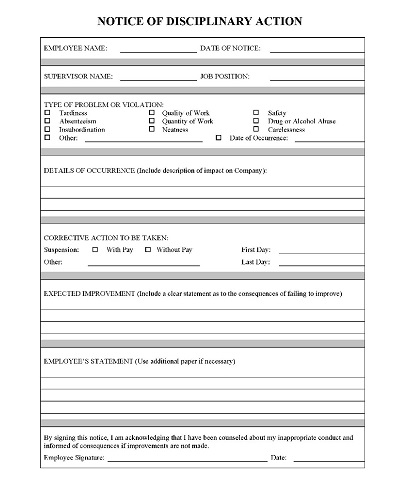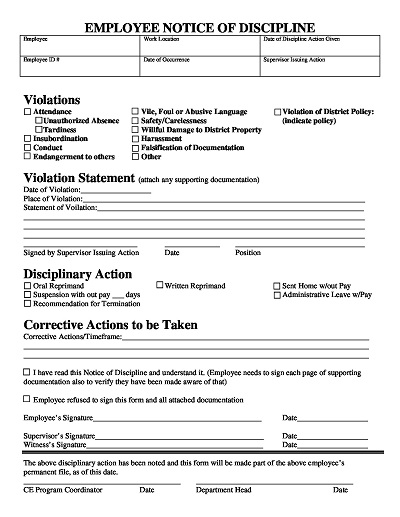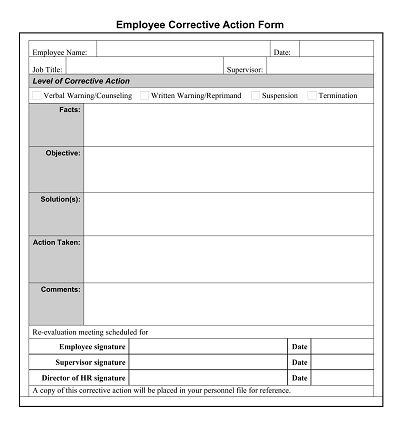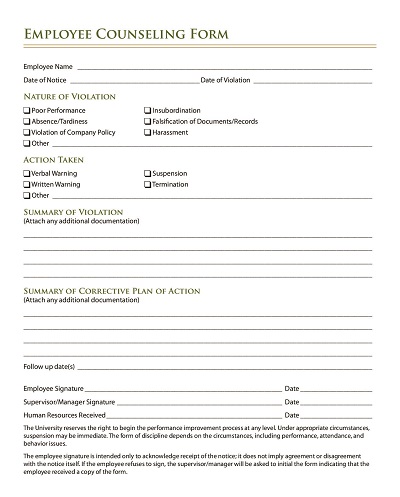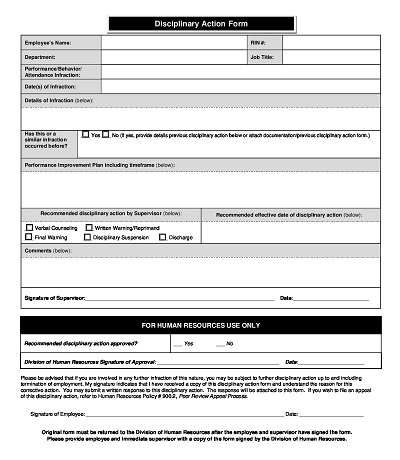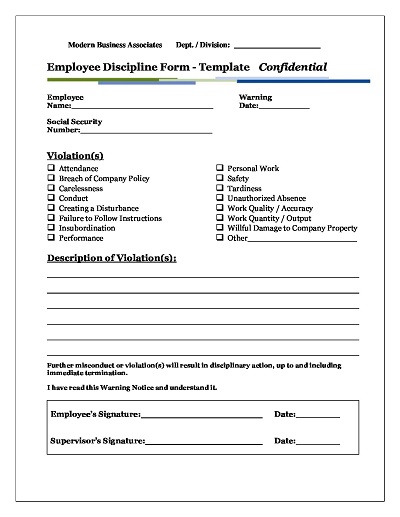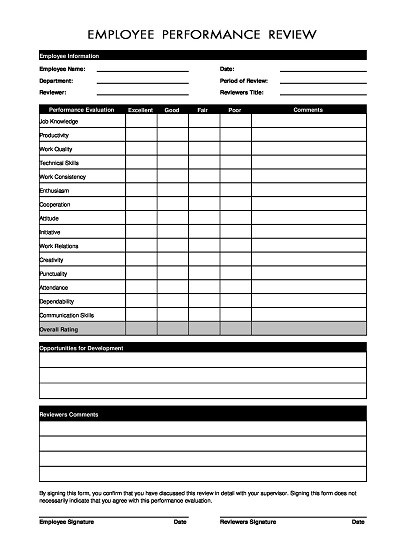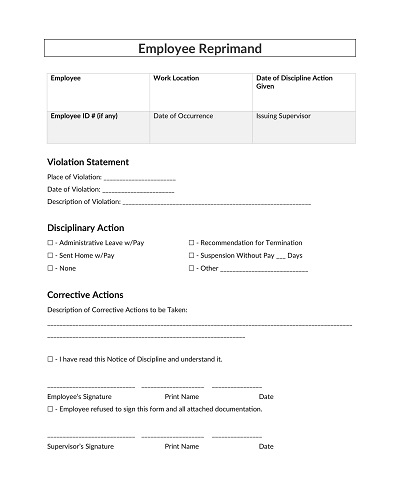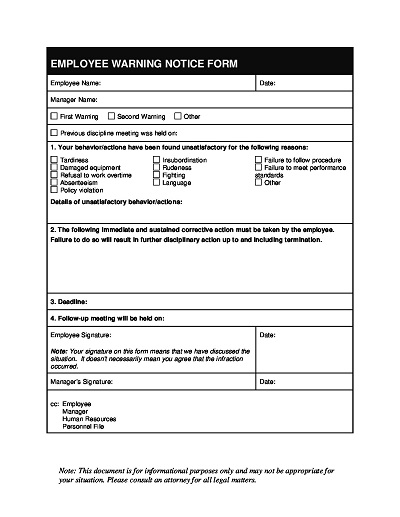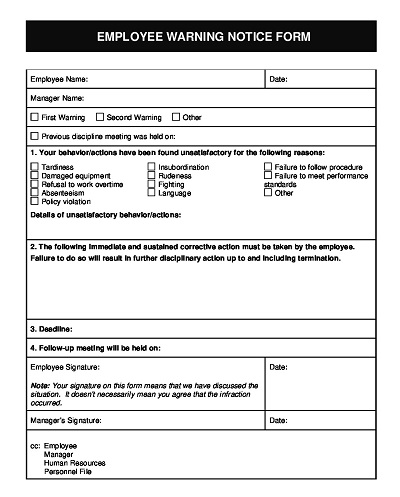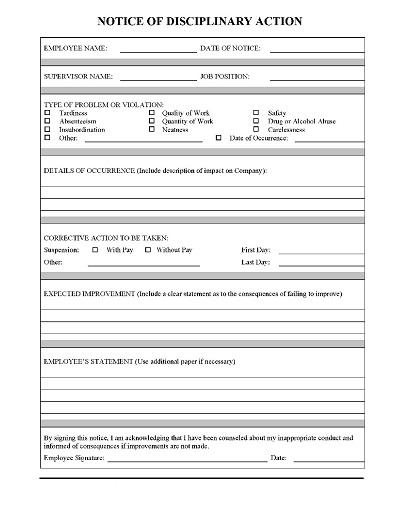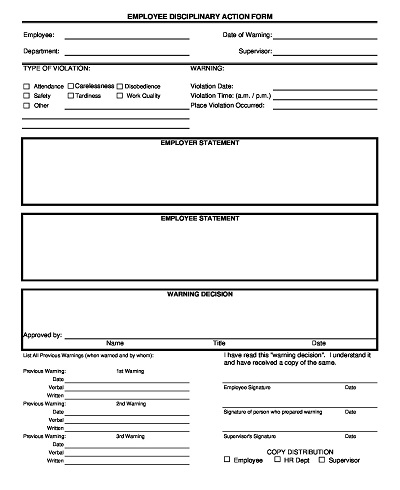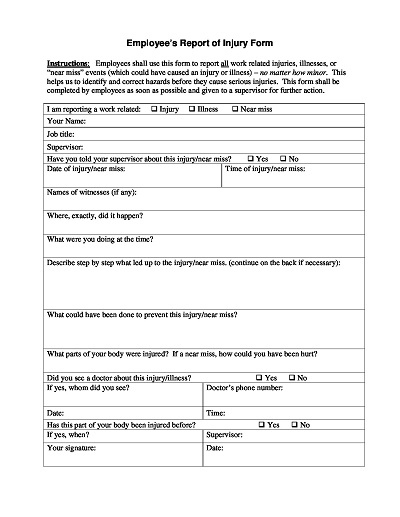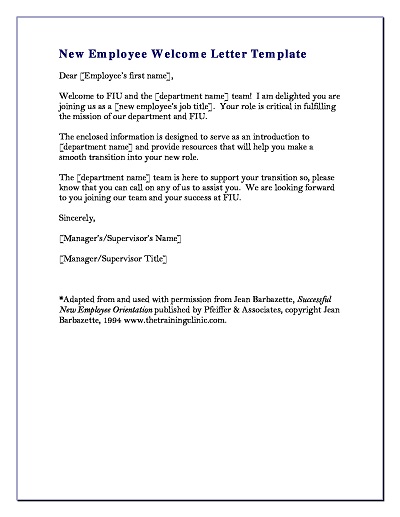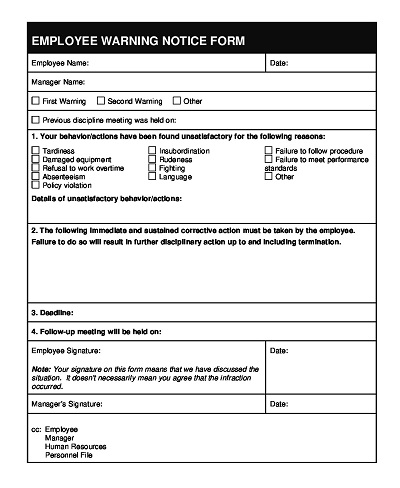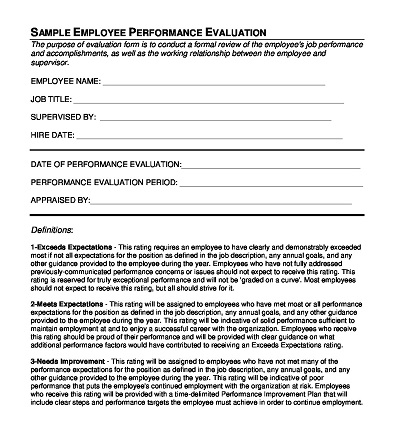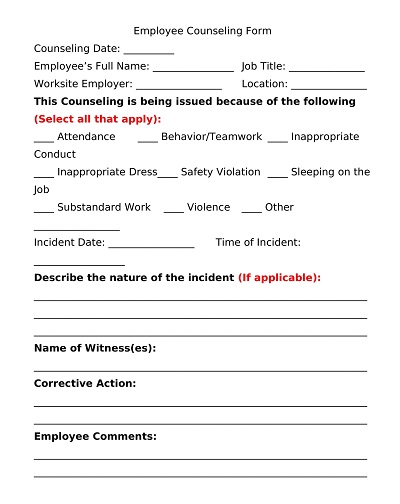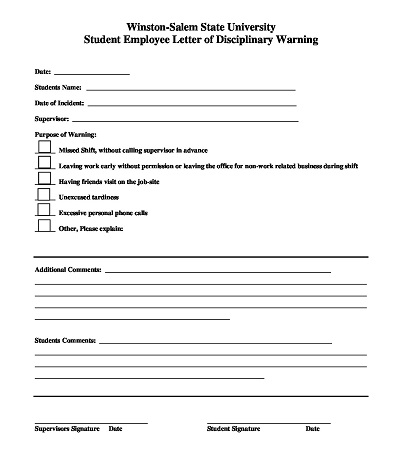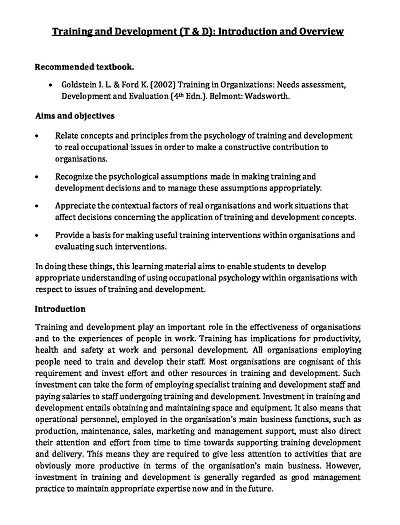38+ Free Simple Employee Write Up Form Templates (Word, PDF)
The templates used by HR Managers to document misconduct, behavioral issues, and performance issues are employee write-up form templates. These forms describe details of the issue, how it impacted the company and the workplace, and any measures that could be taken to rectify it. Feel free to download and use the below customizable Templates in PDF and Word as per needs.
Download Free Simple Employee Write-Up Form Templates
What is an Employee Write-Up Form?
An official document is created that explains what the employee did wrong is defined as an employee write-form. It could be the last step or serious action taken by the company to fire an employee. The company manager fills out this form that explains what employees can improve further or specific rules that were broken. The form is then added to the employee’s file and becomes a part of the employee’s work history.
As an HR manager, your rule is to ensure company procedures and rules are followed by every person. Writing an official write-up form is important to ensure everyone follows the law and company policies. You can share your appropriate opinion on how an employee can improve mistakes. Give advice or punishment for violating the rules company rules. It’s HR’s responsibility to hear for both parties whether the employee disagrees with the write-up or doesn’t want to receive punishment. Make sure to provide a fair solution to the problem.
What is the Purpose of Using Employee Write-Up
The write-up form highlights the clear expectations of both employees and the company. It includes information like why it is important to follow workplace rules or policies. This formal document shows the record of an employee’s violation of the rules of the workplace.
It provides information for future decisions and actions. It shows that the employee is accountable for his actions. It documents disciplinary actions taken and creates a paper trail, which can be crucial in justifying further steps. If repeated violations occur employee will be terminated.
When and Why to Use Employee Write-Up Form?
You can implement an employee write-up form after one or two verbal warnings. When informal teaching is unable to improve performance. It emphasizes rectifying the issue and acts as a document of an employee’s misconduct. It may also include what employees can do next whether it’s a warning or final termination after that. HR can initiate write up form on multiple occasions:
- When the attitude of the employee isn’t acceptable!
- When there is a violation of company rules or policies.
- When an employee misbehaves with someone.
- When the performance isn’t up to the mark.
- Upon misuse of resources of the organization
- Discrimination, harassment, or any illegal activity
- Refuge to follow instructions of the company.
- The actions or behavior of employees can affect a company’s financial position or fame.
If the actions to improve behavior aren’t taken by the employee, termination of employment could happen. The employee write-up form acts as an official document of evidence to take further actions on the employee. When there is no need to take legal action, it is better to implement less severe actions. It could be a verbal warning or advising on further improvement; if the issue isn’t critical.
In case the manager can’t able to teach the employee or improve his performance. It the time to wake up by giving an employee a write-up form. It allows the employee to understand the how serious situation is! A well-written employee write-up form includes how to improve the overall performance of the employee.
Different Types of Employee Write-Ups Form
The choice and need for each employee write-up form may vary as per the nature of the workplace. Employee write-up forms could be of these types:
- Performance Improvement Plan (PIP) Form: The PIP form is a constructive tool designed to help employees enhance their performance through clear goals and support
- Verbal Warning Form: Verbal warnings are essential to address minor issues. The aim is to correct behavior without formal documentation.
- Written Warning Form: Written warnings provide a documented record of misconduct or performance concerns. It urges employees to rectify their actions.
- Suspension Notice Form: Suspension notices outline the temporary removal of an employee from work, for serious violations. It allows time for investigation and reflection.
- Termination Notice Form: The termination notice is a formal document that signals the end of employment. It includes detailed reasons and ensures a clear insight into the decision.
- Attendance Write-Up Form: This form addresses attendance-related issues. It employees understand the importance of consistent attendance and the consequences of frequent absences.
- Harassment or Discrimination Complaint Form: A critical form to report workplace issues. It guarantees a systematic approach to handling complaints by building a safe and inclusive work environment.
- Conflict Resolution Form: Used to mediate workplace conflicts, this form facilitates open communication and outlines steps to resolve issues.
- Employee Appreciation Form: Recognition is key to motivation. This form allows employers to acknowledge and appreciate employees’ outstanding contributions.
- Employee Self-Assessment Form: This form empowers employees to check their performance. It Encourages self-reflection and builds a sense of accountability.
- Employee Evaluation Form: This comprehensive form assesses an employee’s overall performance. It provides valuable insights for performance reviews and career development.
- Employee Misconduct Form: This form ensures a fair and consistent method to address and rectify inappropriate behavior in the workplace.
- Job Description Form: Clear job descriptions enhance awareness and performance. This form outlines roles, responsibilities, and expectations for effective job communication.
- Employee Training Plan Form: This form includes training plans to help employees acquire new skills. The skill that aligns individual growth with organizational goals for enhanced performance.
- Disciplinary Action Form: For more serious violations, this form records disciplinary actions taken. It ensures clarity and fairness in the execution of consequences.
- Job Reassignment Form: This form streamlines the process of reassigning employees to different roles or departments within the organization.
- Training Plan Form: This form outlines broader training plans for teams or departments. The plans align with learning objectives and organizational goals.
- Confidentiality Agreement Violation Form: This form ensures a systematic method to address and rectify violations and safeguard sensitive information when confidentiality is breached.
Essential Elements of an Employee Write-Up Form
The Essential Elements of an Employee Write-Up Form are:
- Employee Information: Includes basic details such as the employee’s name, position, department, and date of the write-up. It ensures the write-up is associated with the correct individual.
- Supervisor Information: The supervisor or manager who is issuing the write-up is identified here and his role and department. This provides accountability and a point of contact for any follow-up discussion.
- Incident Details: A description of the incident or behavior that led to the write-up. This should include the date, location, and detailed context of the incident.
- Policy Violation: State the specific company policy or rules that were violated by the employee. Reference the employee handbook or relevant documentation as necessary.
- Previous Warnings: If the employee has received previous warnings or write-ups, details of those instances should be included here.
- Witness Statements: If applicable, include statements or accounts from witnesses. These provide an objective perspective on the incident.
- Employee Response: The employee is given a chance to provide their account of the incident, and dispute or clarify any details as necessary.
- Corrective Action: This section outlines the steps the employee needs to take to correct their behavior by getting specific training.
- Consequences for Violation: Clearly state the potential consequences if the employee fails to take the corrective action or if the inappropriate behavior continues.
- Follow-up Meeting Date: This is the date for a follow-up meeting to review the employee’s progress toward correcting the behavior and to discuss any ongoing issues.
- Employee’s Signature: The employee signs to acknowledge they have read and understood the information in the write-up. Note that this is not an admission of guilt.
- HR Representative Signature: The HR representative signs to indicate that the write-up has been processed and added to the employee’s record.
- Space for Additional Notes: This space is for any other comments, notes, or details that do not fit into the other categories but are still relevant and need to be recorded.
How to Write an Employee Write-Up Form
Follow these steps to write an employee write-up form:
STEP # 01: GATHER THE NECESSARY DETAILS
Collect all the necessary information before writing an employee write-up form. Talk with witnesses, and gather accurate information to make an honest and fair write-up. The necessary information includes:
- Time and date of the incident
- Details of the behavior or incident
- Find out the witness or any evidence available, if any!
- Previous warnings or bad incidents, if any!
- Rules or policies of the company violated.
- Impact on the company and other employees of the bad performance or behavior.
STEP # 02: IDENTIFY THE ISSUE
The next step is to figure out what exactly the issue is; and write it into form. The issue could be bad performance or violations of company terms or conditions. Be specific about the details and highlight issues by including the time, date, and location of the incident.
STEP # 03: DECIDE THE CONSEQUENCES
As the issue is identified, it the time to decide the suitable consequences for the employer’s actions. The consequences could be termination, suspension, or just a verbal warning. It depends on how critical the issue is. Assign consequences are per the company rules and regulations
STEP # 04: WRITE THE EMPLOYEE WRITE-UP FORM
After deciding the consequences and collecting all the necessary details; craft an employee write-up form. Be clear, concise, and fair while designing the form. It should include:
- Details of the issue
- The resultant consequences
- Steps that employee can take to improve their behavior or performance
- Avoid writing emotional or personal opinions
STEP # 05: REVIEW AND APPROVE
Review the form carefully to check out its completeness and accuracy. Show it to the employee’s supervisor or HR Manager to seek their approval. After their approval handover the form to the employee in the private meeting/
Schedule a meeting with the employee to deliver the write-up form. and discuss the details in the write-up form. Provide an opportunity to ask questions and respond. Focus on finding the solution to the issue; maintain professional and calm behavior in the meeting. Designing everything from scratch could be time-consuming, you can customize any of the above printable employee write-up form templates as per your need.

